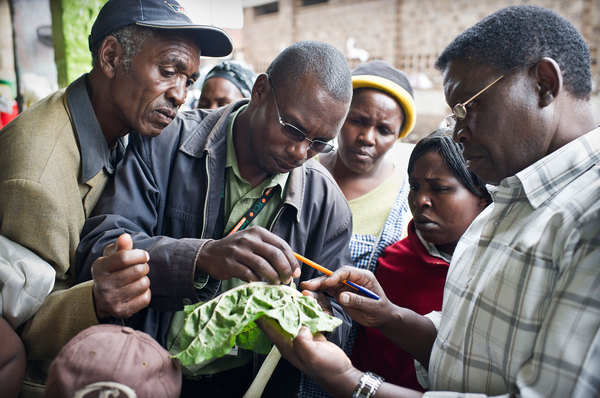UK Needs Increase In Agriculture Graduates To Tackle Global Food Security
Increasing the production of food in an environmentally sustainable way is a major global issue. A report produced by the UK Cabinet Office in 2008 predicted that the global population will rise to 9 billion by 2050 from a current 6.8 billion. This increase in population will substantially increase demand for food, with food production…
Bread from the ‘Tree of Life’
Breadfruit has been coined the new ‘super-fruit’ and according to some has the ability to alleviate world hunger. However, it has recently been discovered that breadfruit may also have a very different role in saving lives. Scientists have isolated three chemicals produced in the male inflorescence of the breadfruit that are extremely effective at repelling…
Update: Plant Health News (18 Dec 13)
Here’s a taste of some of the latest stories about plant health, including the use of technology to improve the detection of papaya viruses, toxins discovered in banana root tissue kill root pests and the vital importance of water conservation in Nigeria to avoid food crises. Click on the links to read more of the…
Good news for Ghana’s plant health promoted this National Farmers’ Day
National Farmers’ Day is a day set aside to commemorate the contributions of farmers and fishermen to the national development of Ghana. Combined, these industries account for over 45% of the country’s annual GDP. At this year’s official Farmers’ Day ceremony at Sogakope in the Volta region, Plantwise and partners will take the opportunity to…
The Bird, the Borer and the Bean
A recent study carried out in Costa Rica found that insectivorous birds such as the Yellow Warbler help to reduce infestations of the Coffee Berry Borer Beetle on coffee plantations by 50%. This free pest control service is estimated to save a medium sized coffee farm up to $9,400 per year. The study carried out by…
Could Spider Venom Be Used As A Novel Insecticide For Major Crop Pests?
A new protein discovered in the venom of Australian tarantulas can also kill insect pests that consume the venom orally. The protein known as orally active insecticidal peptide-1 (OAIP-1) was found to be highly toxic to insects that consumed it, with a similar efficacy to the neonicotinoid insecticide imidacloprid. In particular, the protein was found…
Water and oil do mix after all: of great discoveries and the prospects for agriculture in a desolate land
Report by Willis Ochilo and MaryLucy Oronje After years of desolation, Turkana has come alive with its colossal water reservoir and plenty of oil to boot. Massive reservoirs of underground water and underground oil have been discovered in a remote part of Kenya – the Turkana region. Turkana is situated on the north-western part of…
New strategy required for delaying insect resistance to Bt crops
Transgenic Bt crops have been grown around the world since the 1990s and have contributed to increased yields by controlling agricultural pests. Due to the importance of this technology, there has been continuous study into the development of resistance to Bt crops and how best to avoid this happening. A recent investigation into the rapid…
A Tale of Two Worlds: Favourable Projections, Looming Dearth
It is the best of times, it is the worst of times, it is the season of plenty, it is the season of famine – in short, it is that time when the positive medium term outlook for world agriculture is tempered by the “usual suspects.” For the fourth month running, the FAO Food Price…
Days are numbered for pests in Kenya’s irrigation schemes
Report by Peter Karanja and Abigail Rumsey Between May and July this year, 22 new plant clinics were established in Kenya. Nine of these clinics were launched by the Smallscale Horticulture Development Project (SHDP), which has been funded by the African Development Bank to help smallholder farmers increase the amount that they produce and earn…

